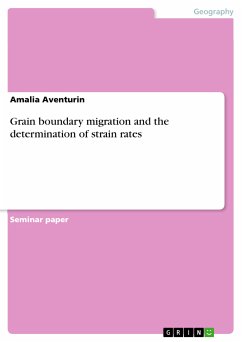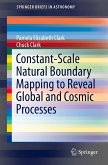Seminar paper from the year 2013 in the subject Geography / Earth Science - Miscellaneous, grade: 1,7, RWTH Aachen University (Lehr- und Forschungsgebiet Geologie - Endogene Dynamik), course: Structural Geology: Microstructural Analysis, language: English, abstract: The thin section consists of angular shaped grains with µm to mm size. The grains are in contact to each other and show different colors. The boundaries between the grains have a sharp differentiation. The starting deformation process leads to a transport of the grains in south east direction (highest pressure direction) of the thin section. Through this process the grains start to move and change their form. Some grain boundaries begin to blend with other boundaries and as a result the grains get bigger. Smaller grains in the thin section get "eaten" from the big ones and disappear completely in the big grains. The grain size is changing in bigger shape. The different thin section particles are moving through the picture and show that the boundaries are changing like a fluid through the deformation process. During the progressive time the grain size gets always bigger (most grains show a mm size) because through the deformation process more and more grains get "eaten" by the big ones. [...]
Dieser Download kann aus rechtlichen Gründen nur mit Rechnungsadresse in A, B, BG, CY, CZ, D, DK, EW, E, FIN, F, GR, HR, H, IRL, I, LT, L, LR, M, NL, PL, P, R, S, SLO, SK ausgeliefert werden.









